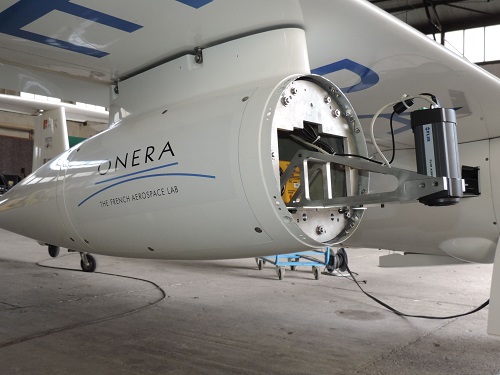In about half of the EU countries, more than 20% of clean drinking water is lost in the distribution network before it reaches consumers’ taps, and in some countries the proportion is as high as 60%, stated a report by the European Commission. Often, old piping systems and poor water pressure management are to blame.
It seems to be quite difficult to measure the precise quantity of water lost every day. According to the calculations made in 2016 by the non-profit initiative European Benchmarking Co-operation (EBC), utilities in 20 participating countries (17 from Europe, together with Oman, Republic of Singapore and United States) face distribution losses up to 66.4m3 per km per day.
Many leaks go undetected because they are not visible on the surface. Now a new technology is being developed to improve the inspection of pipes. This method consists in taking pictures with remote sensing cameras, mounted on a small plane or an unmanned aerial vehicle (UAV). The images recorded in different spectral bands, from the visible to the short wave infrared and in the thermal infrared band, are then interpreted in labs.
“The main information is obtained in the thermal infrared band. Leaks will be detected through changes in the near environment, essentially through the increased soil moisture and maybe through changes in vegetation,” Jean-Claude Krapez, senior research scientist at the French Aerospace Lab ONERA, based in Provence, told youris.com.
He added that one camera actually monitors the thermal radiation emitted by the soil. “Compared to dry areas, wet areas are subject of latent heat exchange with the atmosphere, resulting in a cooling of the surface. This is seen in our images, as darker areas, which are correlated to lower temperature,” Krapez went on. Nevertheless, the thermal radiation level depends not only on temperature, but also on the earth’s surface material, either soil, or rocks, and on the vegetation present.
The research is being conducted as part of the European project WADI and several tests have so far been undertaken in the Provence region in the south of France, using on-board cameras on a small aircraft. Further surveys are envisaged with smaller cameras installed on an unmanned aerial vehicle provided by Galileo Geosystem.

Sensors on a motor-glider - Credits: ONERA
“Both camera systems will work at approximately the same resolution, they will collect the optical signals in nearly the same bands, so we expect the images to be quite similar. With our aircraft we can inspect more linear systems, such as long pipes running for several kilometres, while with the UAV we will inspect more complex networks with many branches and short lines,” said Krapez.
Tens of kilometres of rural land can be surveyed by aircraft equipped with on-board cameras. “It can be different types of water transportation means, either underground, pressurised pipelines or open air canals, drinking water pipelines or water transportation for irrigation,” explained Krapez.
However, some challenges remain when it comes to images interpretation, due to the high heterogeneity of the surface: bare soils, low grass, meadows, crops, bushes, high trees.
“There are many other causes of temperature variations than moisture changes. Therefore, there are a lot of ambiguities,” said Krapez. To solve them, at least partially, the scientists unravel the apparent temperature readings with the help of a vegetation index and analyse the pixels from the remote sensing images in a multidimensional space.
Once the data has been processed, they obtain a “water index map”. But even at this point, images are difficult to interpret, as there are still spurious contrasts and shadow effects. A high water index area could be a real leak or even a puddle, or, in other instances, tree shadows could be mistaken for wet zones. “It will be necessary to interact with people from the water distribution companies to avoid false signals.” concluded Krapez.
Leakage detection is not a precise measurement, but an estimated value, asserted Andy Blackhall, non-executive director at Waterwise, a London based NGO that promotes water efficiency, and head of asset management at WRc Plc, innovation centre based in Swindon, UK. “There is a UK based approach to calculate leakage, using “district meter areas”, which monitor discrete areas of the water network. The International Water Association has adapted this methodology to countries that don’t currently have the assets in place to do this,” he explained, adding that some caution should be exercised when comparing international values.
According to the British method, the water entering each area is checked against a theoretical flow. When specialists detect a significant difference, activities are undertaken to target the leaks and fix them until the water level becomes normal. In the UK, leakage is typically reported in the range of 18-23% using this system.
The northern European countries generally publish the lowest levels of leakage. “Countries like Denmark show values as low as 3-4%. And then there is quite a scatter across Europe upwards of 40% in some instances,” explained Blackhall. He stated that higher levels are generally reported in countries where regulation of the water industry is less established in relation to leakage.
In this context, the ongoing review of the 20 year old Drinking Water Directive (98/83/EC) can be a step towards more efficient water supply management, as it covers the topic. The European Commission has also proposed greater transparency on water losses to allow people to be informed about suppliers.
Up to 2 April 2018, citizens can share their opinion on the Commission's draft via the Have Your Say website.
By Sorina Buzatu
19 March 2018